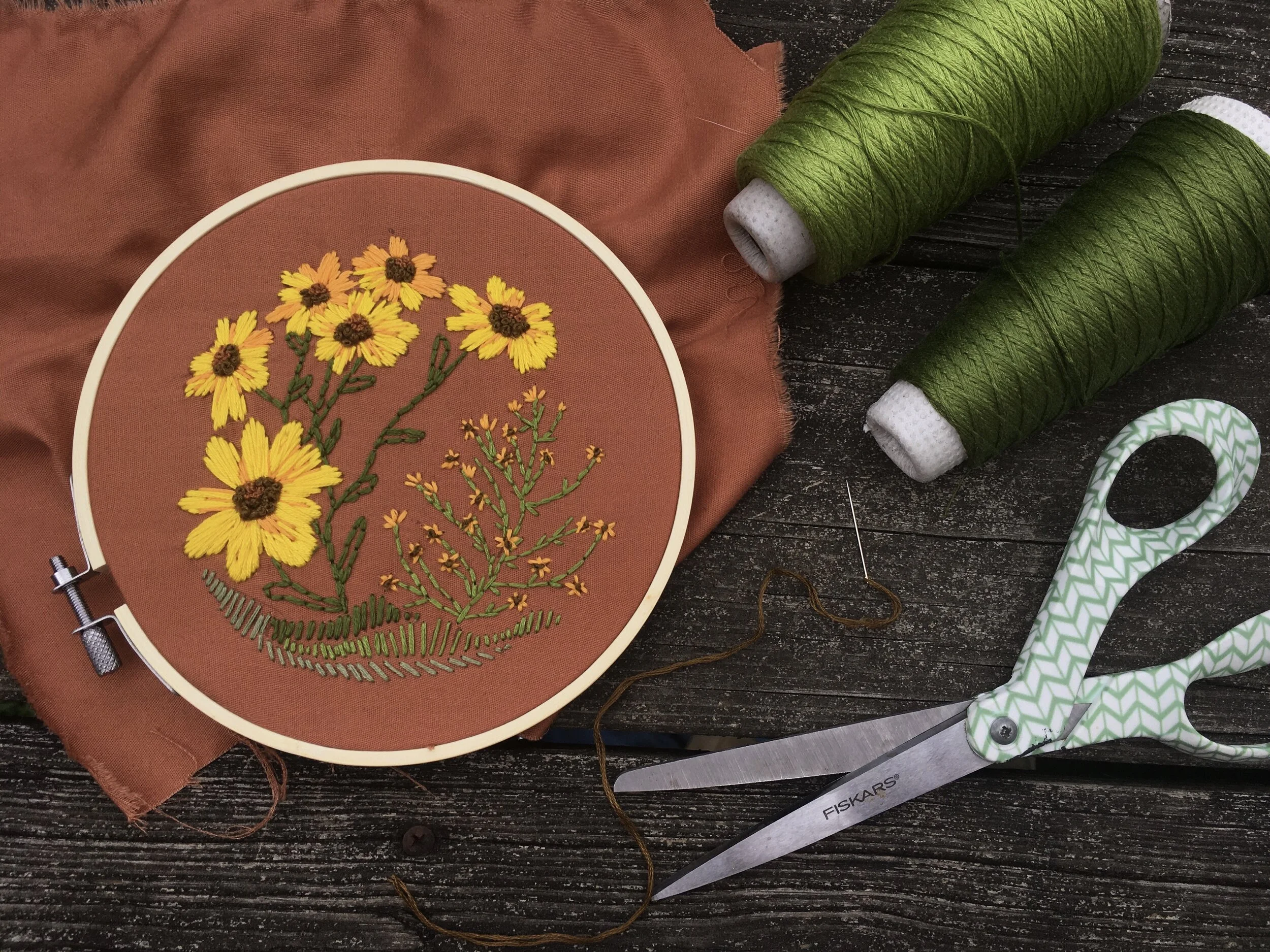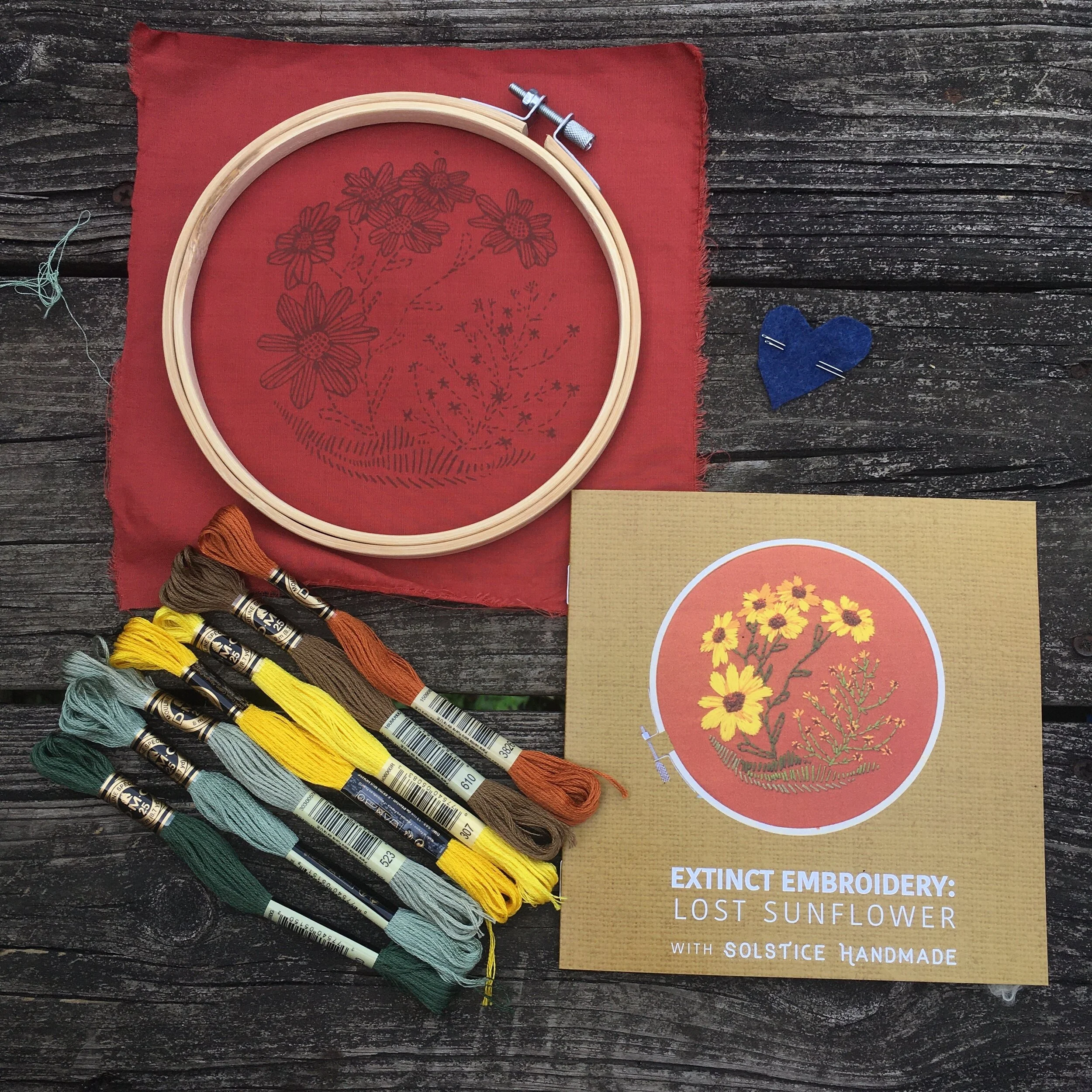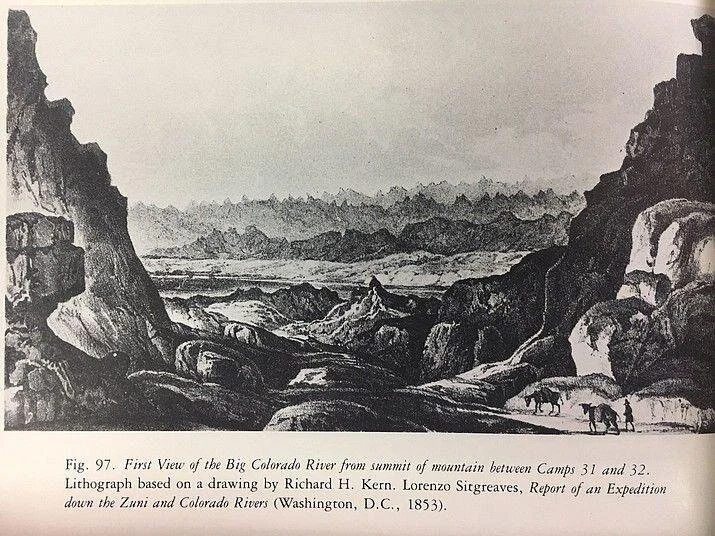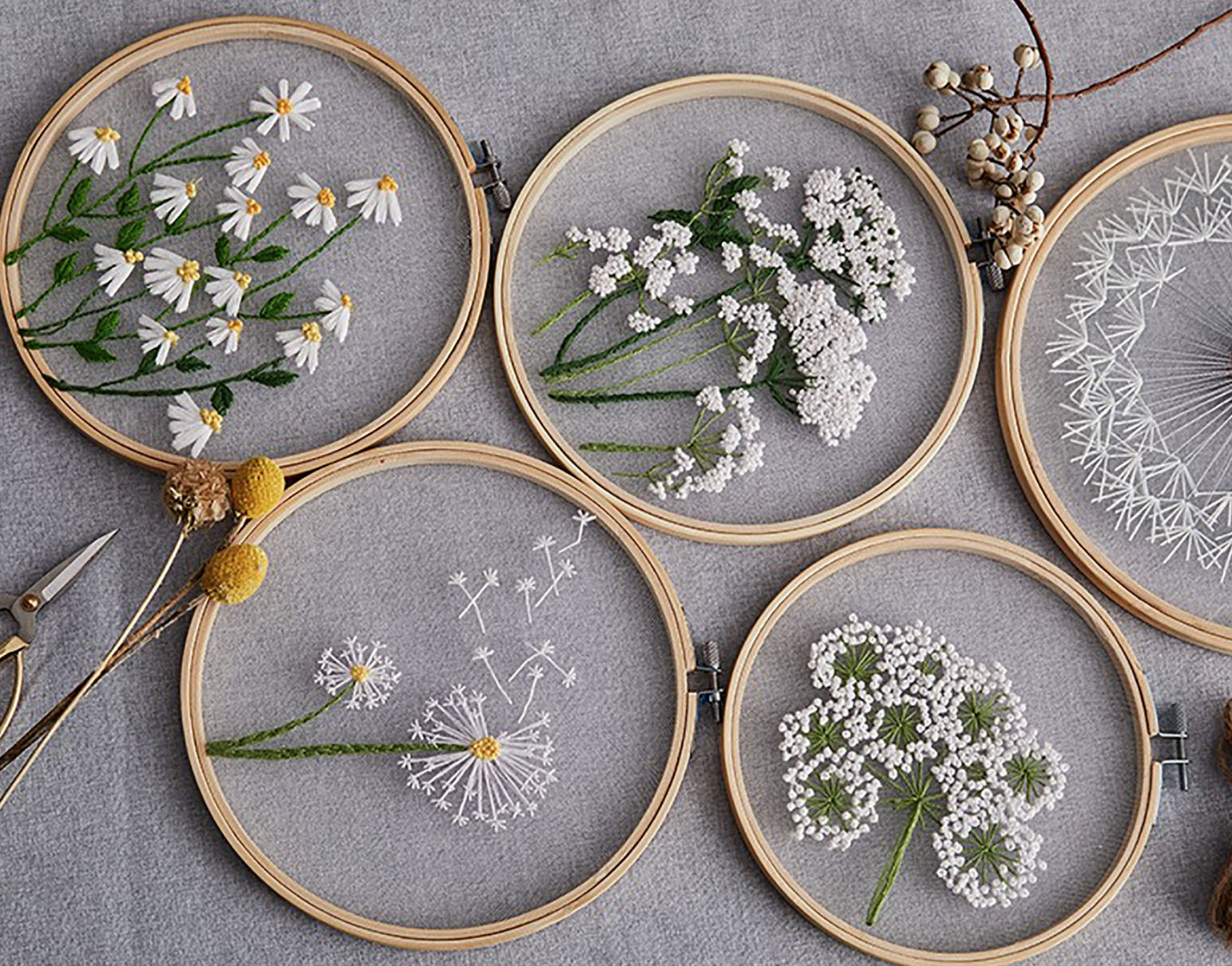Welcome to
EXTINCT EMBROIDERY
The Lost Sunflower
SUPPLIES
6in hoop
needle
printed pattern to stitch
6 strand embroidery floss: light yellow, dark yellow, dark brown, orange brown, light green, medium green, dark green
Helianthus praetermissus: LOST SUNFLOWER
-”known only from the type specimen collected in 1851 on the Sitgreaves expedition”
-Recorded by E.E. Watson
-Similar to Helianthus paradoxus
-Discovered at “Ojo de la Gallina”, but location discrepancy remains
“Annual (?); stem slender, unbranched, about 0.9 m tall, sparingly coarse-strigose; leaves opposite to mid-stem, alternate above, narrowly linear-lanceolate, about 6 cm long, 6 mm wide, acute, entire, narrowly attenuate to a sessile base, thinly appressed hispid; head solitary about 1.0 cm across; involucral bracts lanceolate, acute, minutely rough-hairy; rays few, yellow, narrow, about 1.0 cm long; disk flowers with reddish-brown lobes, glabrous, base obscurely pubescent; achenes hairy at the tip with two readily falling scales at the summit. Flowers in September.” (newmexicorareplants.com)
The Sitgreaves Exhibition
-“In 1850, an expedition led by Captain L. Sitgreaves surveyed a segment of the Rio Grande, the Zuni River, and the Colorado River (Sitgreaves 1853). Like Emory and Abert, Sitgreaves reported on the vegetation he encountered. More detailed and technical observa- tions, however, were made by S. W. Woodhouse, M.D., the surgeon and naturalist of the expedition”
-First “scientific expedition” to the area
-Traveled on the Lower Colorado River, encountered Mojave people
Sunflowers in Mexico’s History
-The United States acquired the Southwest from Mexico by treaty in 1848.
-”symbol and metaphor for war, a key offering to the war god Huitzilopochtli, and was depicted on the shields of several important deities”
-Called chimalacatl (‘shield-reed’), and chimalxochitl (‘shield-flower’)
-the Aztec domesticated the flower, among other plants : “Mexico has long been recognized as one of the world's cradles of domestication with evidence for squash (Cucurbita pepo) cultivation appearing as early as 8,000 cal B.C. followed by many other plants, such as maize (Zea mays), peppers (Capsicum annuum), common beans (Phaseolus vulgaris), and cotton (Gossypium hirsutum”
-Symbol and food
-Considered ”Probably extinct”
-In a paper written about the conservation of similar species Helianthus paradoxus, “Each core habitat must be on reasonably stable wetland that is not trending downward from agricultural or municipal use of the contributing aquifer, and have demonstrated a self-perpetuating stand of Pecos sunflower for at least 10 years.”
-This plant was listed as threatened in 1999 with the following threats listed: habitat destruction, over-utilization, disease and predation, inadequacy of existing regulatory mechanisms, and other natural or manmade factors.
Deciding what plants to save
-we’re in the 6th mass extinction
-”the most genetically unique species have the greatest importance to an ecosystem and should top the conservation list.”
- 'The more evolutionary history that is represented in a plant community, the more productive it is.'
Embroidery Resources:
Check out our Embroidery Gallery for ideas + examples of how to apply your stitches to other flowers
Browse other Embroidery Kits + Classes
Explore Stitches with :
Make your own pattern: A Guide to Fabric Marking Tools
Needle Threading Tips from the Embroidery School of London
Embroidery Inspo
Mirjam Gielen
Abstract stitching, responding to the base fabric
Hooray Forever, Amber Barker, Ashwelle Fiber Works, and POST
French Knots!
big, broad, bold stitches
Danielle Clough
“thread painting”















